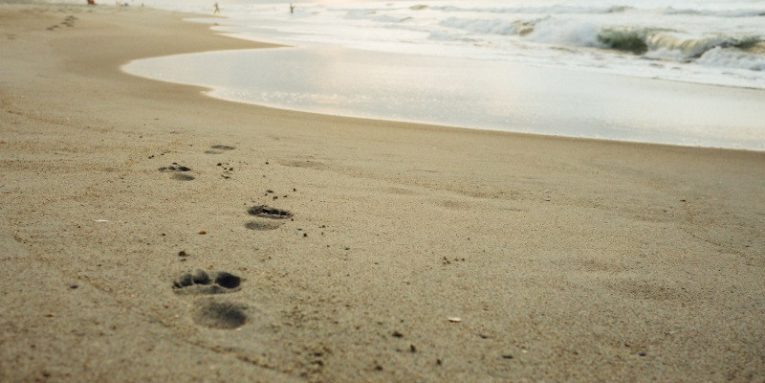How to Delete Your Digital Footprint and Enhance Your Virtual Security

Do you share personal information online? The real question is whether or not you overshare? If you believe that you might be doing just that, it's high time you adjusted your behavior. If it is too late, and there's already tons of information about you online, it might be time to delete digital footprint. Though this might take a couple of hours, it can certainly enhance your virtual security and protect you against serious security-related issues. If you have no idea what's the big deal with sharing stuff online, and you believe that nothing bad could happen to you, continue reading this article, and maybe you will find some interesting information. We explain the dangers of oversharing and leaving a digital footprint behind, and we also suggest a few simple steps that you can take to delete digital footprint and improve your virtual security.
Table of Contents
What is a digital footprint?
Your digital footprint is every littlest piece of information that you post and share online. According to techterms.com, a digital footprint is a trail of data you create while using the Internet. It includes the websites you visit, emails you send, and information you submit to online services. It is also possible to separate your activity into two different categories: active digital footprint and passive digital footprint. Your active footprint defines the data you submit intentionally and that is publicly traceable; for example, when you send an email, post a tweet, or share a personal photo on your public Instagram account. Your passive footprint defines the data you submit unintentionally; for example, when you visit a website and your IP address is logged automatically. Although many users believe they can delete digital footprints by clearing their browsing data, resetting browsers, and removing posts, things as not so simple. Remember that nothing you delete is ever really deleted. If it's out of sight, it does not mean it is gone.
Whether you are a serial Instagramer, are active on Facebook, Twitter, and similar social networking platforms, post comments and reviews, send emails, or use instant messaging services, you have a digital footprint. What's the big deal? Everyone has it, right? That is correct, for the most part, but that does not mean it is a non-issue. Depending on how you act online and what kinds of security measures you have taken, you could be in trouble. A very simple example of that is your pet. People go as far as creating personalized Instagram and Facebook profiles for their pets, but even one photo can be dangerous. If anyone can learn the name of your pet, and you have included it into a password that you use, it might be a matter of time before someone guesses it. Virtual privacy goes beyond creepy messages from unknown people or stalkers who can use publicly available photos of you and create fake profiles. Hackers can now use the information you post – such as your name, date of birth, pet's name, hometown, etc. – and use it to brute-force passwords. Overall, your digital footprint is not something you should ignore.
How to delete digital footprints
As you know, once you post that photo, share that tweet, or send that message, it is no longer private. Even if you delete it, someone could have downloaded or screenshot it already. If you ever reviewed privacy policies of the websites you visited or used, you know that trackers can collect all kinds of data too, which means that information can be stored on the servers you might be unaware of completely. And what if they are not secure and can be accessed by cybercriminals? This is a whole different topic, but it is possible. At the end of the day, your digital footprint can be tracked by various parties, and so you should do everything to make sure that it is as minimal as possible. Here are a few things you can do to achieve that.
- Switch from Public to Private
If your Facebook, Instagram, Twitter, LinkedIn, Google+, and similar social networking accounts are public, you should consider going private. Every platform allows you to adjust settings to ensure that the content you post is not visible to just anyone. Of course, if you are a budding social media influencer, this option might not be so appealing, but, in this case, you should at least be careful about what you post. Do not post photos with your home address in the background, and check if the information you share cannot be used to guess your passwords and, consequently, hijack your accounts.
- Delete old/unused accounts
How many accounts do you own that you no longer use? MySpace, Bebo, Digg, and Friendster are just a few of the many platforms that you might have used at some point but do not use now. If you can log in – and that might be impossible if you do not remember passwords and cannot recover them, or if your accounts have been deactivated already – you should delete photos, posts, and other content you shared, unlink active accounts, and then delete digital footprint by deleting the accounts themselves. Maybe you have an old Tumblr account that you no longer use? You should also consider deleting your Google+ profile because this platform is being dismantled as you are reading this report.
- Delete old posts and old "friends"
How long have you been using Facebook? Probably long enough to have some embarrassing posts and photos on your profile. It is the smart thing to do to go through them and delete some things. Remember that even if the things you shared were shared with friends only, you could still be at risk, especially if you have hundreds and thousands of "friends," some of whom you might have not even met in real life. Are you familiar with catfishing? If you are, you should understand that hackers could hide behind seemingly real people. This is why it is also a good idea to go through your friends' list and delete people you are not familiar with. Of course, this is not limited to just Facebook.
- Revise e-commerce accounts
Do you shop online? Who doesn't? Most e-commerce websites require customers to set up profiles, and these are extremely sensitive because they might make home addresses, credit card information, full names, and other personal information available. Without a doubt, you want to minimize the information you share, and so if you have the option, choose to enter addresses and payment information every time, rather than to have this data stored. Also, be cautious about less reputable sources. While Amazon, eBay, and similar e-commerce websites are considered to be safe, even they can be attacked by hackers.
- Check your inbox for unwanted subscriptions
You might be receiving a ton of promotional emails every day. You might be interested in some of them, but the chances are that you do not even remember subscribing to some newsletters. Luckily, it is easy to fix this problem. Open the latest unwanted email you receive and find the link representing unsubscription. The process might be different in every case, but it should not be difficult to unsubscribe to emails you keep receiving. Why should you bother with that? First of all, spam creates a mess. Second, you want to make sure that your email address does not end up being shared or sold to other parties and even schemers.
- Google yourself
Yes, you read it right. It can be quite healthy to look yourself up from time to time just to see what kind of information is publicly available. You might discover old profiles you no longer use and should delete, as well as fake profiles that might be posting personal information publicly. Needless to say, if you find private information linked to your name (e.g., your home address or phone number), you want to make sure that it is either made private or is deleted. You also should check the images to make sure that private photos have not been leaked by accident or without your permission. This is the digital footprint you want to delete.
- Clear browsing data
There is one magic key combination that every user needs to be familiar with, and that is Ctrl+Shift+Delete. Open your web browser, tap the keys at the same time, and then clear your browsing data. Check the right time frame (e.g., "All time" on Chrome or "Everything" on Firefox), mark all boxes, and then clear data. This action is one of the most important ones you can take to delete digital footprint because it ensures that your browsing history, download history, cache, passwords, autofill data, and similar details are removed. You should clear browsing data not only on desktop computers but on all smart devices too!
How to manage your digital footprint in the future?
It is impossible to leave no virtual trails, but there are things you can do to make your digital footprint as minimal as possible. It is most important that you are smart about the information you share. Unless it is a social networking profile, you really do not need to disclose your actual name or other personal information. If the sign-up process requires you to enter your full name or date of birth, just make something up. Of course, if this data is used for the recovery of forgotten passwords, you want to keep it safe. This is yet another thing you can do using the versatile Cyclonis Password Manager. If you decide to create a fake identity – and make sure you don't do this in an illegal manner – you can save it in the Profiles section to keep the information safe. You can also use VPN software and Incognito mode to keep your browsing as anonymous as possible. And if you end up selling or discarding of old electronic devices, make sure you wipe them using special software first to delete digital footprint completely.
In conclusion, your digital footprint is completely in your hands, and you are the one controlling it. If you are smart about the content you post and keep your virtual presence to the minimum, you can drastically minimize your digital footprint and, consequently, enhance your virtual security too.









I used WiTopia for 6 months on several PCs and Android devices with only one problem - any search query put in Google was blocked by Google itself explaning that there are too many queries generated by the network I use. Therefore I switched to Private Internet Access because how would you like to be on internet without possibility to Google anything...
All the VPN services I've looked at previously require you to install a client app on your computer or device - will any of these work with, say, the VPN client in a DD-WRT'd router too allow own to pipe his entire LAN over the VPN?